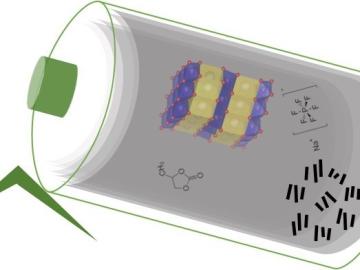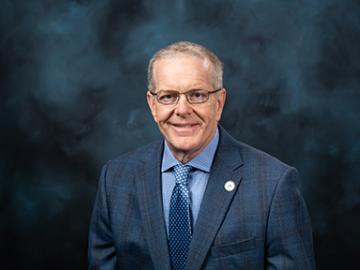
Filter News
Area of Research
- (-) Energy Science (62)
- (-) Fusion Energy (1)
- Advanced Manufacturing (13)
- Biology and Environment (31)
- Building Technologies (1)
- Computational Biology (1)
- Computational Engineering (2)
- Computer Science (8)
- Electricity and Smart Grid (2)
- Functional Materials for Energy (1)
- Fusion and Fission (2)
- Materials (28)
- Materials for Computing (6)
- Mathematics (1)
- National Security (5)
- Neutron Science (6)
- Quantum information Science (4)
- Sensors and Controls (1)
- Supercomputing (15)
News Type
News Topics
- (-) 3-D Printing/Advanced Manufacturing (36)
- (-) Big Data (3)
- (-) Biology (4)
- (-) Clean Water (4)
- (-) Coronavirus (4)
- (-) Grid (17)
- (-) Machine Learning (4)
- (-) Nanotechnology (5)
- Advanced Reactors (8)
- Artificial Intelligence (4)
- Bioenergy (5)
- Biomedical (2)
- Biotechnology (1)
- Buildings (18)
- Chemical Sciences (6)
- Composites (11)
- Computer Science (14)
- Critical Materials (5)
- Cybersecurity (1)
- Energy Storage (32)
- Environment (23)
- Frontier (2)
- Fusion (8)
- High-Performance Computing (3)
- Hydropower (2)
- Isotopes (1)
- Materials (20)
- Materials Science (17)
- Mathematics (1)
- Mercury (1)
- Microscopy (4)
- Molten Salt (1)
- Neutron Science (2)
- Nuclear Energy (7)
- Partnerships (1)
- Physics (1)
- Polymers (7)
- Simulation (2)
- Space Exploration (2)
- Statistics (1)
- Summit (1)
- Transportation (33)
Media Contacts

Researchers at ORNL demonstrated that sodium-ion batteries can serve as a low-cost, high performance substitute for rechargeable lithium-ion batteries commonly used in robotics, power tools, and grid-scale energy storage.

To better determine the potential energy cost savings among connected homes, researchers at Oak Ridge National Laboratory developed a computer simulation to more accurately compare energy use on similar weather days.

Researchers demonstrated that an additively manufactured hot stamping die can withstand up to 25,000 usage cycles, proving that this technique is a viable solution for production.

Researchers at the Department of Energy’s Oak Ridge National Laboratory have received five 2019 R&D 100 Awards, increasing the lab’s total to 221 since the award’s inception in 1963.

A team including Oak Ridge National Laboratory and University of Tennessee researchers demonstrated a novel 3D printing approach called Z-pinning that can increase the material’s strength and toughness by more than three and a half times compared to conventional additive manufacturing processes.

Craig Blue, a program director at the Department of Energy’s Oak Ridge National Laboratory, has been elected a 2019 fellow for SME (formerly known as the Society for Manufacturing Engineers).

Using additive manufacturing, scientists experimenting with tungsten at Oak Ridge National Laboratory hope to unlock new potential of the high-performance heat-transferring material used to protect components from the plasma inside a fusion reactor. Fusion requires hydrogen isotopes to reach millions of degrees.

A new method developed at Oak Ridge National Laboratory improves the energy efficiency of a desalination process known as solar-thermal evaporation.

Scientists at Oak Ridge National Laboratory have developed a low-cost, printed, flexible sensor that can wrap around power cables to precisely monitor electrical loads from household appliances to support grid operations.

A team of scientists led by Oak Ridge National Laboratory used carbon nanotubes to improve a desalination process that attracts and removes ionic compounds such as salt from water using charged electrodes.


